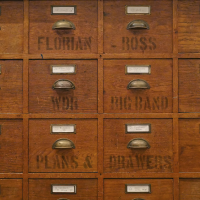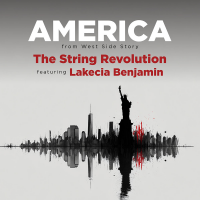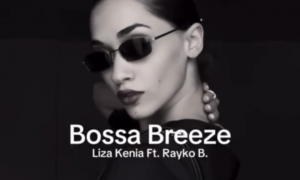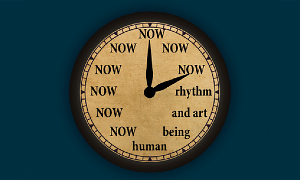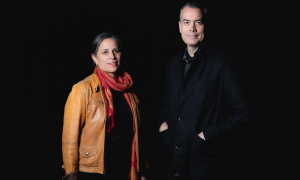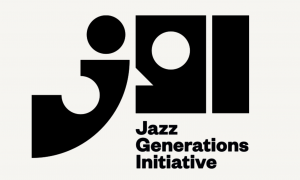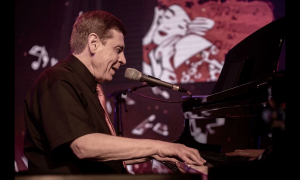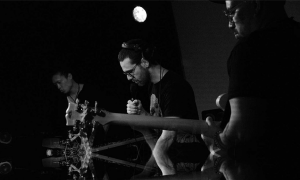But before Paul brought new and exciting life to the book jacket, he was pioneering iconic concepts for jazz album covers that not only enticed the eye but also stimulated purchases.
In Part 4 of my four-part interview with Paul, the design maverick shares the stories behind a handful of Riverside albums--and the one cover that an artist disliked:
JazzWax: Let me ask you about a handful of album covers and how they came about. For example, Sonny Rollins' Freedom Suite.
Paul Bacon: That was largely the work of designer Ken Baren, who was my first hire. Ken was more likely to do abstract stuff than I was--when I believed that an abstract approach was the way to go. For that cover, we went with a childlike feel to soften the cover's title. The goal always was to create a compelling contrast.
JW: How about Chet Baker Sings: It Could Happen to You?
PB: We just thought what we were selling there wasn't jazz but romance. None of us, including me, was particularly fond of the album. I thought Chet was OK on there and interesting as a singer. But all that infant-child breathlessness never impressed me much.
JW: How did that cover come about?
PB: We decided the theme called for a glamour shot of Chet and left the execution up to Paul. The vision was to have Chet with a girl set in the mood for love. Chet was happy to do it, if he was off the junk long enough to be sober.
JW: How well did you know Baker?
PB: I had only met him once before, in the parking lot at Riverside Records on 51st St. My wife and I had just been in to see Bill Grauer when we saw this forlorn shape moving toward our car. It was Chet. He just managed to say, “Is Orrin [Keepnews] up there?" Chet was a type of phenomenon. He could play if he was really on. [Photo of Chet Baker by Herman Leonard/CTSImages.com]
JW: Was Baker authentic?
PB: I suppose so based on his definition. For me, he was on the opposite end of the spectrum from Thelonious Monk. Alfred and I once took Thelonious up to a radio station to appear on Fred Robbins' program. Fred wasn't a bad guy but in those days he was really ambitious but not yet hip. But he knew how to navigate the microphones [laughs]. [Pictured from left, drummer Sid Catlett and Fred Robbins by William P. Gottlieb]
JW: How did Robbins get along with Monk?
PB: Fred didn't know what he was dealing with in Monk. Fred probably never met someone who was incapable of lying.
JW: Why, what happened?
PB: Fred talked a little bit, and Monk was muttering in his usual style. Then Fred played a record without saying who it was. At the end, Monk said, “Well, it sounds like someone playing like Miles Davis." In truth, it was Chet Baker. Fred was infuriated, though he didn't show it at the time. Later Alfred told me that Fred told him privately, “Never bring that guy around again." I guess Fred must have felt that Monk's comment was intended to tell listeners that Fred was square. Which, of course, wasn't it at all. Monk was simply saying what was on his mind, the truth. [Photo of Chet Baker and Miles Davis by Cecil Charles/CTSImages.com]
JW: How was Thelonious Monk's Brilliant Corners photographed?
PB: We talked about what we could do with the title track, Brilliant Corners. We also listened to the different tunes. Then we tried different concepts, like Monk sitting in a corner or standing on a street corner, but they didn't have any lift. They didn't say anything. Then Paul came up with an idea.
JW: What?
PB: Paul said, “I think I can do something with a multiple image." Paul set up mirrors somehow. The cover you see was done with one shot using mirrors, not multiple images. Monk got a huge kick out of it.
JW: Why the surrealist cover for Monk's Misterioso?
PB: The surrealists were cutting edge then, and I was probably more aware of modern art than others in our group. We agreed that Giorgio de Chirico was about as serious as you could get when it came to surrealism.
JW: Why not Dali?
PB: I didn't really like Dali. De Chirico's work is mysterious and suited Monk's Misterioso title best. [The piece is de Chirico's The Seer from 1915.]
JW: And Thelonious Monk Plays Duke Ellington?
PB: When the Ellington band was first reorganized in 1929, it was called The Jungle Band for the sounds it created with plungers and so on. The Monk cover was an obtuse reference to that. I figured those who knew would get it.
JW: The Other Side of Benny Golson?
PB: I thought it would be kind of funny if we literally featured another side to Benny. Sometimes literalism pays off when handled the right way with the right typeface. Remember, we were totally unfettered. We had no real paragons to base things on.
JW: Did you have a favorite cover that you illustrated?
PB: One of my favorites was an early Blue Note album for Ike Quebec called Mellow the Mood. The cover was a deliberate attempt on my part to try my hand at French painting.
JW: Did a jazz artist ever hate a cover?
PB: I did a cover for Steve Allen and Irene Kral in 1959. It was for United Artists, not Riverside or Blue Note. They gave me the record to listen to and told me who was on it. I thought it was a smart album. I called it SteveIrene-o!--as a play on “Steverino," Allen's nickname. I thought it was clever.
JW: What did Allen say?
PB: I was in an elevator soon after the album came out and Steve Allen was in there. Someone in the elevator said to him, “Hey, I saw your new album." Steve said, “I know. Isn't that terrible?"
JW: What did you do?
PB: I sneaked out on the next floor [laughs].
This story appears courtesy of JazzWax by Marc Myers.
Copyright © 2025. All rights reserved.





